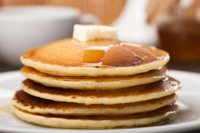I'm setting up a dual-disc front end & want to cross drill the rotors before I do the install. Anyone know of a machine shop in No California (or in the Western US) that does cross drilling? I don't own a drill press or I would do myself.
thanks,
Doug
San Francisco
thanks,
Doug
San Francisco









 Expensive stuff (on this side of the pond). Seems like we oughta be able to find something close (enough) locally, though....
Expensive stuff (on this side of the pond). Seems like we oughta be able to find something close (enough) locally, though....